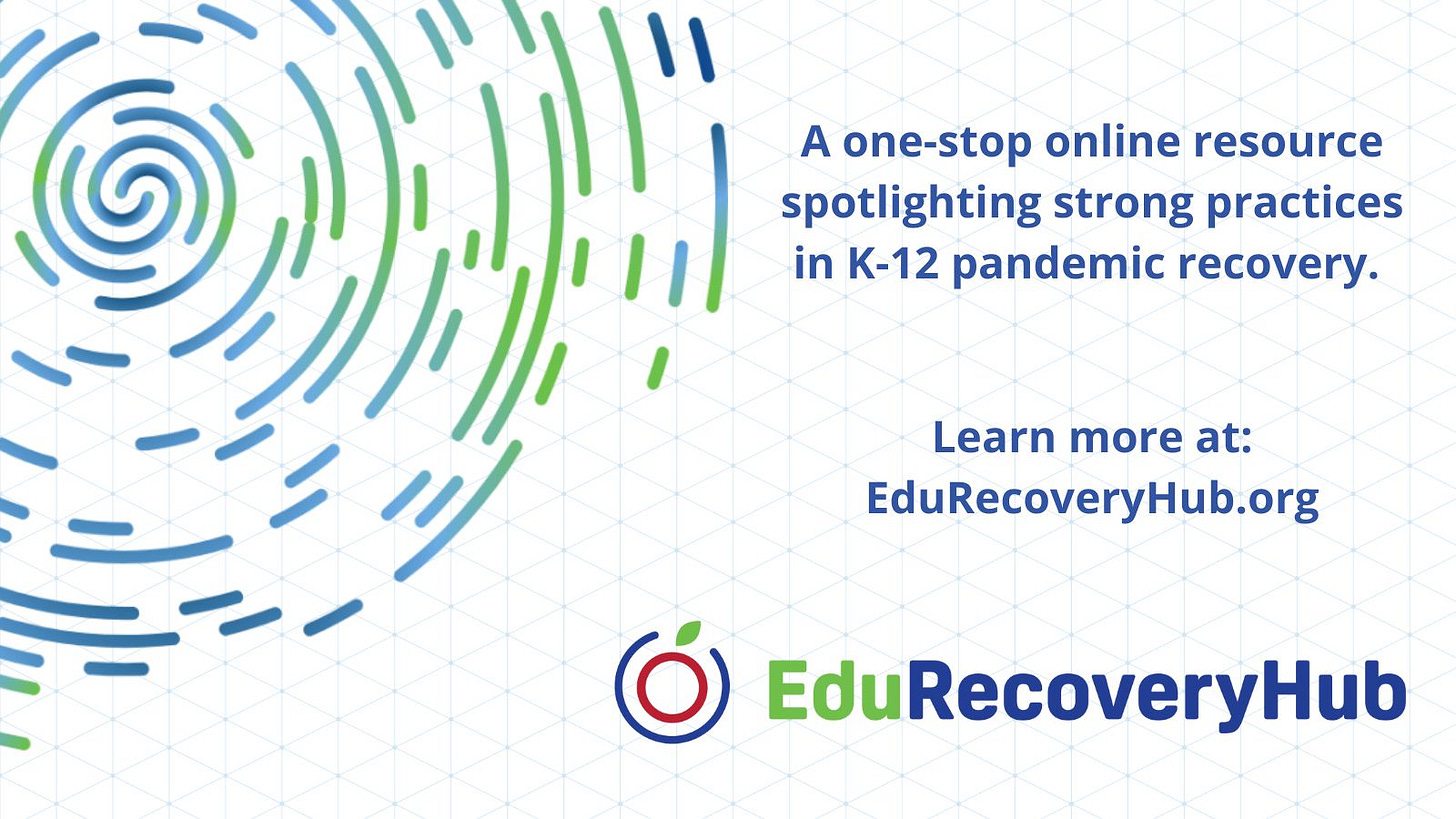In spring 2020, we heard from education leaders that the pandemic might be a chance to design a "new deal" package of education policies. Since then, the federal government has provided $190 billion in federal aid so schools can address pandemic challenges. This once-in-a-generation investment provides options to innovate and modernize schools. Unfortunately, advocates and families remain unclear about whether federal aid will achieve its transformative potential.
Given how uncertain the pandemic is, the federal relief funds for schools are very flexible. On the flip side, there is little accountability for how districts and states choose to spend the money. The US Department of Education reports spending trends across broad spending buckets at longer intervals. But, there is less state and local information about these spending trends in real-time. This leaves families and communities in the dark about how their schools will address their students’ pandemic challenges.
With this in mind, I am delighted to share the Education Recovery Hub, a recent collaboration with colleagues at Edunomics and the Collaborative for Student Success that elevates promising and innovative state and local spending examples.
It identifies excellent and transformative or innovative investments.
It creates shared knowledge about which states and districts are leading the nation and may provide policy infrastructure for other states and local peers to adapt and apply.
It elevates examples through analysis, crowd-sourcing via reputable education leaders, and validated by a group of national experts in key substantive areas.
If you have examples of promising or innovative investments, please send them my way. We will likely see more discussions about using these funds as Governors provide new budgets, legislatures meet to discuss recovery, and school districts begin budgeting for next year.
The Education Recovery Hub harkens back to spring 2020: we can and must do more to transform US schools so they will meet the different needs of our students recovering from the pandemic. This remains our chance for state and local "new deal" policy design and investments that will define our children's future and generations beyond.
COVID-19
OH | Ohio schools are not required to conduct contact tracing anymore. A theme occurring across some state and local agencies in response to the different nature of Omicron spread.
CDC | The CCD released new guidance for childcare centers. The direction reduces quarantine periods for people who wear masks and reiterates layered protection strategies.
Brookings | Will a universal COVID-19 vaccine change vaccine policies and coverage across the US?
ASTHO | A new source indicates that public health authorities may be able to transition away from contract tracing. This will be a relief for school leaders and staff.
The74 | A year-long study finds that masks on children led to a 13-14% reduction in school closures among child care centers.
“It’s COVID-19 that’s harmful, not the masks that prevent its spread.”
EdWeek | Some districts have difficulty securing affordable, high-quality masks for students and staff.
Morning Consult | Morning Consult is tracking how safe parents feel about their children returning to school amid the COVID-19 pandemic.
FEDERAL EDUCATION POLICY
USED | A coalition of school organizations wrote a letter to Secretary Cardona requesting an extension of expenditures for capital construction investments to 2026.
USED | The US Department of Education released the Notice of Proposed Priorities for Project Prevented discretionary grant program and opened a 30-day public comment period.
USED | The Department is kicking off a social media campaign called #ARPStars to highlight local education spending plans using pandemic aid. This month, the final $41 billion of ESSER funds was pushed to states and districts.
USED | Secretary Cardona released his four priorities for his second year of service in the Department. During his press briefing, he frequently said that we need to “level up” our country’s education system.
STATE AND LOCAL EDUCATION POLICY
NYC | NYC Chancellor David Banks discusses opening a new school that will focus on serving students with dyslexia.
MS | Mississippi Governor’s State of the State speech described giving pay raises to teachers.
OR | The Oregon Promise grant program disproportionately goes to less-need students. We need accountability for this.
The Hill | Governance matters a lot for crisis management. Yet, it has been all over the board throughout the pandemic. We may see a breakdown in different branches at the state level.
TEACHING AND LEARNING
CCSSO | The CCSSO released a guide for high-quality, grade-level instruction emerging from a network of state leaders.
Gallup | Forty-seven of parents with kids in remote learning work full time.
ASSESSMENT AND ACCOUNTABILITY
Chalkbeat | US graduation rates dip in response to the pandemic impacts.
EdDive | States are now releasing state test scores, and declines in academic progress may be underestimated due to historically underserved communities missing out on remote testing options last year.
IES | Two new grants were awarded to researchers at UT Austin and the University of Oregon to address specific recovery strategies for students with special needs.
The74 & Zearn | The math company Zearn collects data about students’ math engagement and learning. This information remains one of the nation’s only real-time indicators of children’s progress during the pandemic.
RACIAL EQUITY AND SOCIAL JUSTICE
EdWeek | According to a new UCLA study, local action and policies restrict learning about identity, race, and gender for more than 17.7 million public school students.
NASBE | The newest issue of NASBE’s journal provides in-depth conversations about how we need to show up better for students with disabilities moving forward.
EDUCATION FINANCE
ECS | A new policy brief explains how states can count students for funding purposes. Given the challenges the pandemic introduced with attendance and enrollment measures, this is a vital topic to dive into.
ERN | Education Reform Now released a brief with ratings on state plans for American Rescue Plan funds. Don’t be intimidated by the ratings; this guide is valuable and intentional.
AASA | AASA and Education Counsel released the third part in their series of self-assessment tools for LEAs. The latest focuses on planning for significant investments strategies.
K12Dive | State and local leaders need to share any changes they make to staffing investments through ESSER funds.
UPCOMING EVENTS
Wednesday, February 2nd (2 PM EST) Results for America is hosting Examining the Evidence: Supports to Promote Teacher Well-Being.
Wednesday, February 2nd (3 PM EST), ACT is hosting Disrupted Learning: What We Know and How to Move Ahead.
Friday, February 4th (1:30 PM EST), USED hosts COVID Testing in K-12: A How-To webinar.
Monday, February 7th, NCEE and OECD are hosting Trends Shaping Education 2022.
Dr. Christine M. T. Pitts serves as Resident Policy Fellow at the Center on Reinventing Public Education, overseeing policy leadership at research, advocacy, and government relations. A former teacher and administrator, she previously led research and evaluation for Portland Public Schools. She also served as Policy Advisor at NWEA, where she oversaw state and federal policy to advance equity and innovation in educational assessment. Follow her on Twitter @cmtpitts.







